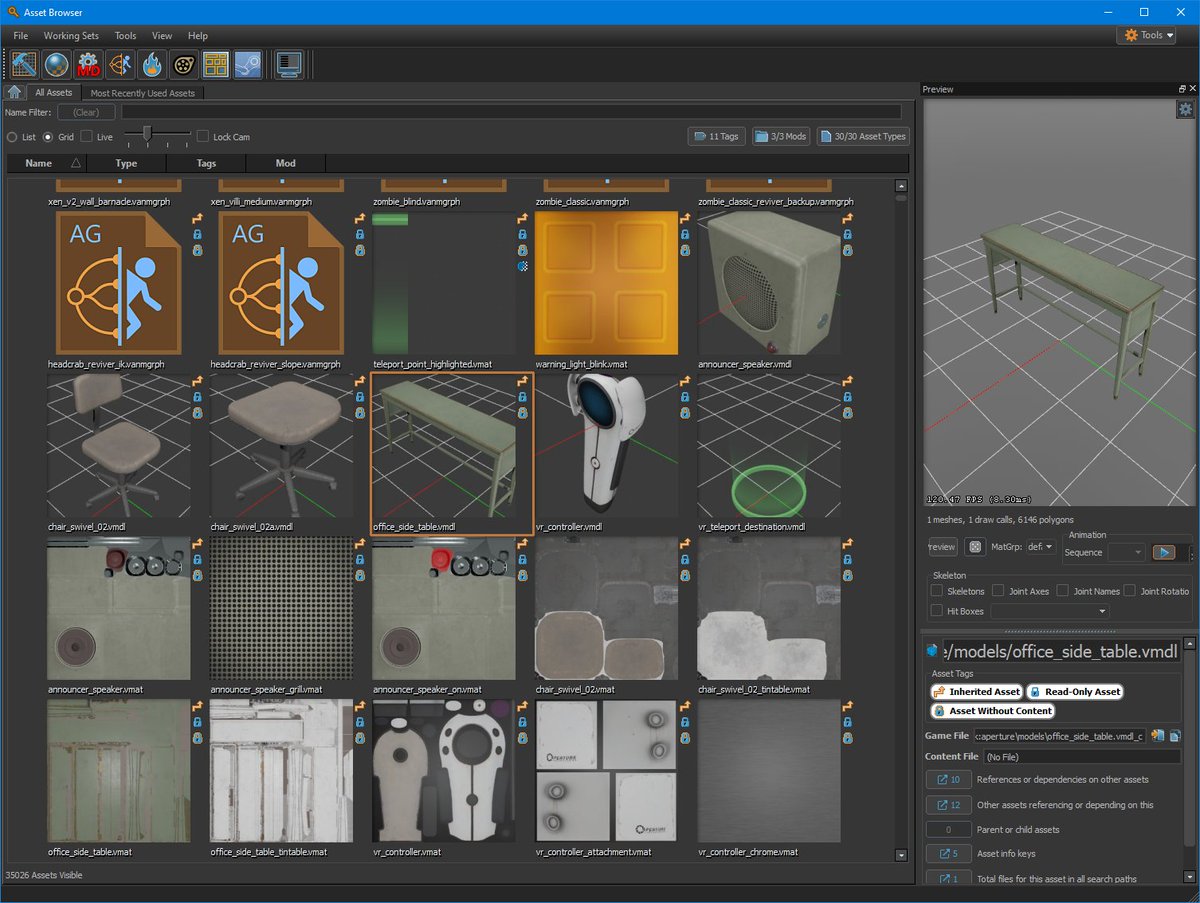
Something else I worked on on Weird West (@WolfEyeGames) is the hiding of walls/floors/etc between player and camera. Roofs dissolve out completely based on some more-involved-than-you'd-think traces, walls dissolve (using TAA dither) from ankle-height up in a plumbob shape #ue4
Initially I was not using a plumbob shape and just trying to math my way out of the problems that come with using a cylinder, this is better and was a suggestion from @kurtruslfanclub (DSD's does that) 

That shape reduces a lot of times close to the player character where bits of wall off to the sides of the player would be hidden incorrectly (using a cylinder shape). I do also spheremask a small area right around the player for if you're right up against a wall
The roofs hide when you're under them, but also when you're aiming under them, which was a hassle to get right consistently. Most of the levels were built by the time I was doing this, so solutions that needed level markup were out of the question (and sort of a drag anyway).
If you're aiming into a building you want to see who's in there (it might be a baddie) but you also want to show the roof if you're aiming at someone *on* the roof, even though your aim line might be going straight through a bottom-floor window of the same building. Fraught
Plus, if you do this with a bunch of traces out in your aim direction from your aim location, moving either your character or your aim a little bit can get different result from frame to frame, and now we're flickering the roof and nobody is having a good time.
Plus, the windows aren't at a consistent height.
To fix the frame-to-frame issue I just rounded the player location we do all our traces from to the nearest, like, meter or half-meter ish. This needed some tweaking to not just skip certain windows as you strafe past
To fix the frame-to-frame issue I just rounded the player location we do all our traces from to the nearest, like, meter or half-meter ish. This needed some tweaking to not just skip certain windows as you strafe past
If you're not aiming, I think I just ended up tracing up from the player to find the roof, and hiding the right building layers; if no roof I think I'm doing radial traces out in a few-meters-wide circle around the player, and looking for a nearby enough roof to be worth hiding
If you ARE aiming I ignore the player's location and do quite a lot of traces out in the aim direction in like a 30 degree arc, checking upwards for a roof every couple of meters. The aim direction is rounded to the nearest 35 degrees-ish, again so we don't flicker the roofs
The aiming system ended up having sort of a soft lock-on thing; if you're considered to be "aiming" at something it's highlighted red. That's convenient - if it happens, I just forget all this other stuff and act like the player is standing where the target is standing.
So if someone is sniping you from a top level window, and you're aiming at them, you can see the whole top floor. The way layers are hidden means you can't easily do both "show building A's top floor" and "show building B's bottom floor" but I don't think it ever comes up
(but if it was going to it would be when you're in the bottom floor of a building, aiming out the window at an enemy in the top floor of another building, and then you wouldn't be able to see yourself, so you'd just get an outline of yourself). Never happens
Everything uses the same three or four materials, so it was easy to set up material params to opt-out of this per object; eg doors, doorframes, interactables never dissolve (unless they're on a dissolved floor of a building). LDs had to find those cases and disable it on 'em
And you could also disable or enable it per-object instead of per-material by adding a component to that actor
The actual hiding-chunks-of-building stuff, as opposed to the fadey walls, was all @JouanAmate I believe - the results of the traces I mentioned go into a C++ system of his which hides stuff using Layers (an oft-forgotten Unreal feature)
Characters, furniture, etc, which needs to hide along with the floor it's on, has a FloorSensingComponent, and that lets a guy suddenly become visible if he walks out onto the balcony of a hidden floor of a building, for instance. Or hide a vulture when it lands on a hidden roof
That stuff was all very clever and I was pleased not to have to do it. Thanks Jouan!
Oh, another thing was, none of these wall meshes were designed with this in mind, so initially it looked a bit bad, but then Ewan Croft, effects man who I don't know if he's on twitter, made the wall material two-sided and had the backfaces coloured black, which worked nicely
Means the interior wall parts you can suddenly see just look like they're in darkness rather than there's nothing there, in the space between the walls
The plumbobbed wall-fading stuff only kicks in when you're under a roof, except, there are some objects that opt into just doing it at all times, like trees when you're in a forest.
Also, if you're just like "how did you mask all that stuff out without losing the shadows" the material node you want is Shadow Pass Switch
Fun fact, before this system came in we just had the camera going almost full top-down when indoors, so only the roof had to be hidden. I didn't like that super much personally
• • •
Missing some Tweet in this thread? You can try to
force a refresh




